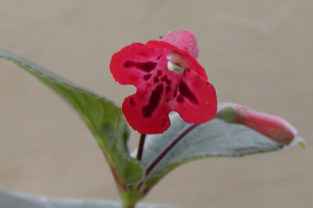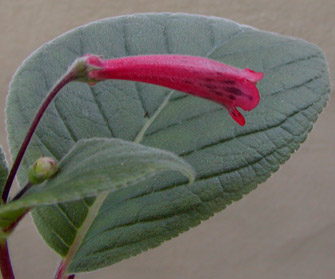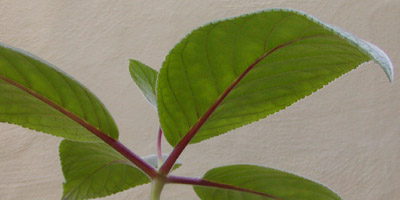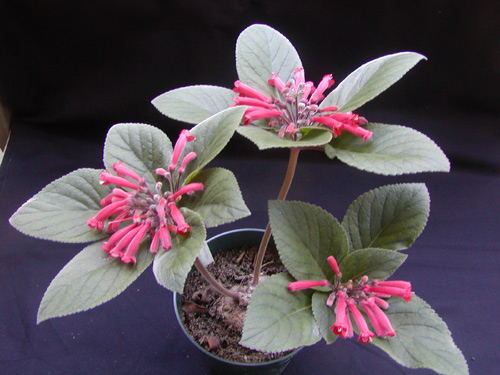Sinningia douglasii x leucotricha

I crossed S. douglasii with S. leucotricha in 2004. This was hardly the first time this cross had been done -- see the crossing chart. The first flower appeared in May 2007 (neither parent species is quick to bloom from seed).
The parents are two of my favorite species, so I was curious to see what the result of crossing them would be. The hybrid could be a stepping stone to a nice combination, and I've harvested F2 seed from this plant. (I also note that Mauro Peixoto's Brazil Plants club offers leucotricha x douglasii F2 seed.)
The flower resembles that of S. douglasii, but is just a little smaller.
The foliage is intermediate between the two parents. The leaf is definitely hairy, but the hairs are not as conspicuous as those of S. leucotricha.


